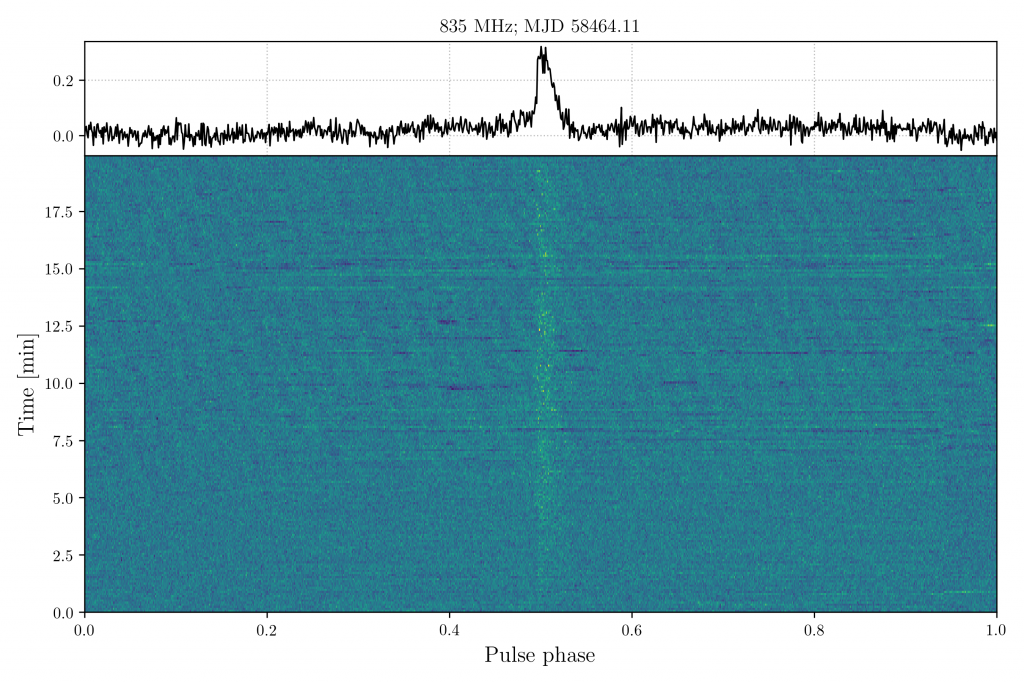A magnetar is a highly magnetic neutron star — formed when a star ends its life in a supernova explosion. They are the most magnetic objects known in the Universe.
“XTE J1810-197” is one such magnetar – it was discovered in 2006 by an X-ray satellite, and was picked up at a wide range of radio wavelengths as well. It was the first magnetar found to also exhibited pulsar-like behaviour. Over the following year it faded gradually away and become more and more difficult to pick up.
On December 8th 2018, observers in the UK using the Lovell telescope picked it up strongly as part of regular monitoring looking for just such an event. The reported the sudden intense change in its radio emission as an Astronomer’s Telegram.
PhD student Marcus Lower used UTMOST to observe the magnetar on December 12th 2018, and picked it up very strongly — sufficiently so to see many individual pulses as the magnetar rotates every 5 or so seconds.
The pulse from the magnetar is seen clearly running vertically through the plot, which shows intriguing fine structure which is typical of magnetars.
An Astronomer’s Telegram reporting our detection of XTE J1810-197 at low radio frequencies can be found here.
